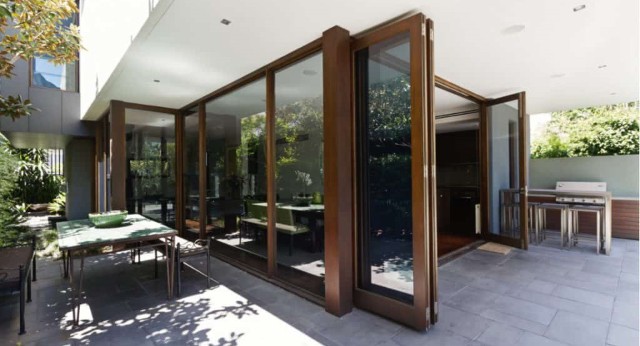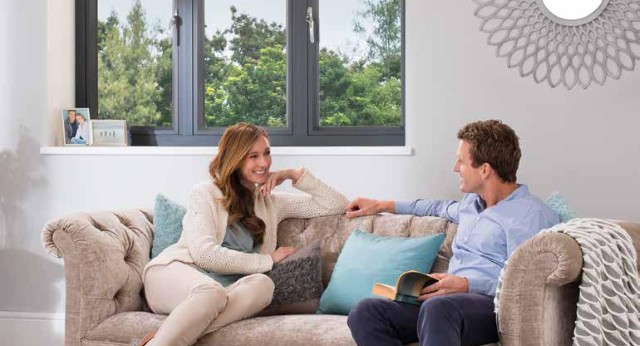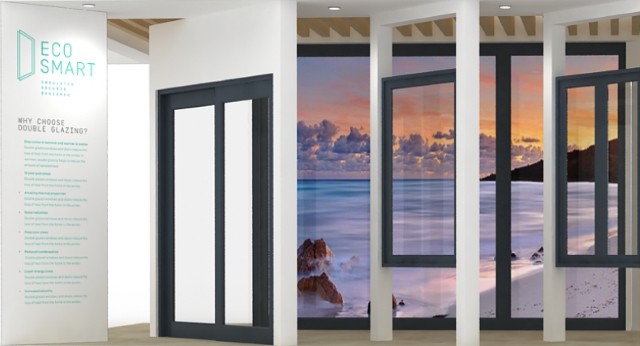3. What to know before you buy
How and why are windows rated?
Windows are a major part of the design of your home, providing light and fresh air and offering views that connect our interior living spaces with the great outdoors. Unfortunately, they also can represent a major source of unwanted heat gain in summer and significant heat loss in winter.
“As part of a commitment to improving the energy efficiency of Australian buildings, the Australian Government supports the Window Energy Rating Scheme. Energy efficient windows are a great opportunity to reduce a household’s need for heating and cooling, save money on energy bills, reduce Australia’s appetite for energy and help our environment.”
Department of Climate Change and Energy Efficiency
Energy Efficient Windows
Today, remarkable new framing and glazing materials have changed the energy performance of windows in a radical way.
Energy efficiency means reducing the amount of times heating and cooling appliances are turned on and off. Energy efficient windows will make your home or building more comfortable, dramatically reduce your energy costs and help to create a brighter, cleaner, healthier environment.
It is better to install efficient windows than to rely on heating, ventilation and air conditioning (HVAC) systems to solve thermal comfort problems. Not only do HVAC systems create non-uniform interior conditions, only partly relieving thermal discomfort, but power outages on peak days can lead to extremely uncomfortable conditions.
Ordinary windows can represent a major source of unwanted heat gain in summer and significant heat loss in winter. Up to 40% of a home’s heating energy is lost and up to 87% of its heat is gained through windows. Installing energy efficient windows will improve the thermal performance and comfort of your home along with reducing energy costs and greenhouse gas emissions.
There are literally hundreds of glass and window types to choose from but selecting the correct one is critical to improving the energy efficiency of your home and reducing your energy costs.
With the Building Code of Australia (BCA) now stipulating regulations on energy efficiency, your window selection along with other factors determine the star rating for your home. Each state is slightly different due to their individual climate, and it’s important to understand what is best for your climate when selecting your windows.
The Window Energy Rating Scheme
So how do you compare the energy efficiency of different windows? The simplest way to do this is using the Window Energy Rating Scheme (WERS). WERS rates the energy impact of residential and commercial windows throughout Australia. Useful performance figures such as U-value and SHGC as well as air infiltration, condensation, fading and visible transmittance are provided. (Explanations of terms are detailed below)
How does the rating system work?
WERS-rated windows, skylights and glazed doors are accompanied by a label which certifies that the window has been tested by an independent accredited simulator and approved by a WERS auditor.
The windows cooling and heating stars are rated on a scale of 0 to 10 stars. No stars show that the window is a very poor performer, 10 stars means the best possible performance and a whole new world of energy efficiency and interior comfort. These ratings show the effect the window will have on the energy performance of the whole house.
Detailed energy performance information on a comprehensive range of certified windows is also available through the WERS website. In addition to the cooling and heating stars, the online product directory provides an indicative percentage reduction in heating and cooling needs as well as values for thermal, solar, optical and air infiltration performance.
For example: In very cold climates, look for windows with very low U-values in order to minimise discomfort. If summer discomfort is expected, look for very low SHGC values, but bear in mind that lower SHGCs lead to increased comfort in the summer at the expense of less winter solar warmth.
What are “U” values?
U-values measure how effective a material is as an insulator. The lower the U-value is, the better the material is as a heat insulator. A product with a low U value therefore reduces the transfer of either heat or cold from one side to another, so helps retain heat in the winter if the inside temperature is warmer than the outside and reduce heat gain in the summer when the outside temperature is warmer than the inside.
An Australian single glazed window will typically have a U value between 4 and 6 W/m2K, and an Australian double glazed window will normally have a U value of between 3-4.5 W/m2K.
Our thermally broken aluminium double glazed windows and doors have U value of 1.2W/m2K or less as standard.
Are our windows suitable for bushfire prone areas?
Yes! As leading suppliers of Thermally Broken Aluminium double glazing products, our frames and glazing meet the requirements of building in bushfire prone areas. We would need to understand the area you are building or renovating in and provide more structured advice.
Many construction sites now fall within bush fire prone areas. This will have a significant impact on the types of windows and glass that must be used. AS 3959 specifies the requirements to assess the site and building requirements.
It is important to give the correct Bushfire Attack Level (BAL) to the window supplier so they can ensure they are providing you with a compliant product. Compliance can be checked through systems either meeting the prescriptive provisions of AS 3959 or via test reports if systems have been tested to meet bushfire requirements.
Bushfire Considerations
There is a need to comply with all of the known material standards and regulations when designing, manufacturing and selecting windows and doors.
Considerations should be made for the following conditions:
- Harsh corrosive environments, coastal or industrial.
- Acoustic performance requirements.
- Safety and security.
- UV resistance: Australia has a significantly higher level of UV than many other countries. Materials such as Thermally Broken Aluminium provide higher levels of UV performance.
The more information that is provided the more fit for purpose (and cost effective) the product will be.
Our Windows & Doors are better than the rest

Double-glazing for all projects

Discover the benefits of double glazed windows & doors


